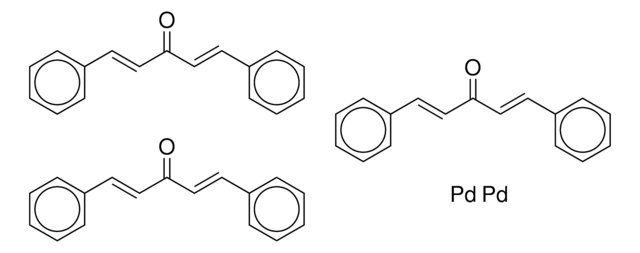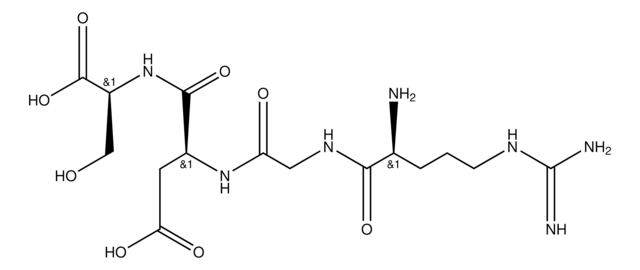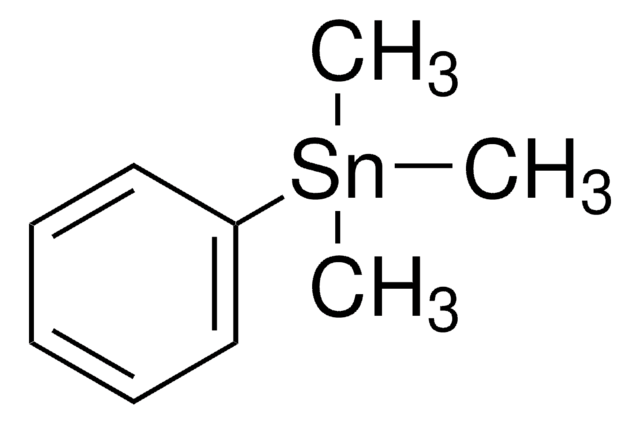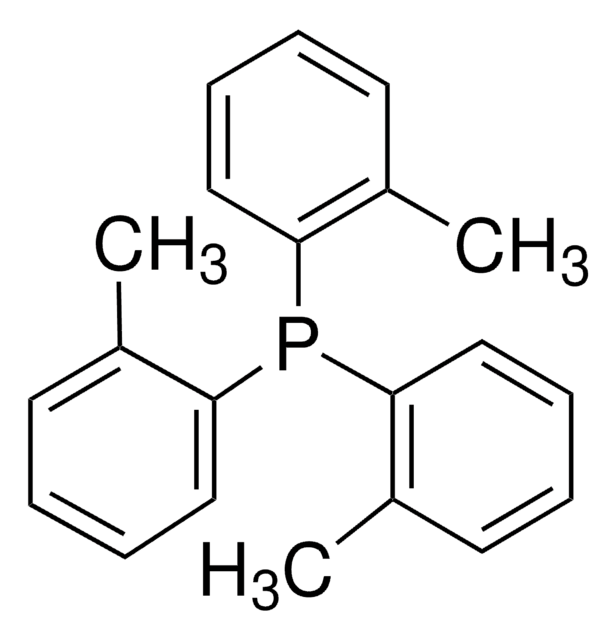738891
2,5-Bis(trimethylstannyl)thiophene
97%
Synonym(s):
1,1′-(2,5-thiophenediyl)bis[1,1,1-trimethyl] Stannane
About This Item
Recommended Products
Quality Level
Assay
97%
form
solid
mp
93-102 °C
SMILES string
C[Sn](C)(C)c1ccc(s1)[Sn](C)(C)C
InChI
1S/C4H2S.6CH3.2Sn/c1-2-4-5-3-1;;;;;;;;/h1-2H;6*1H3;;
InChI key
KKRPPVXJVZKJON-UHFFFAOYSA-N
Application
- Technical note: Evaluating nuclear magnetic resonance spectroscopy for determining body composition in Holstein dairy calves using deuterium oxide dilution methods.: This research explores the application of nuclear magnetic resonance spectroscopy, combined with deuterium oxide dilution, to accurately determine body composition in dairy calves. This method could offer a non-invasive alternative for assessing nutritional status and growth metrics in livestock management (Chapman et al., 2017).
- Estimating lean mass over a wide range of body composition: a calibration of deuterium dilution in the arctic ground squirrel.: This study calibrates deuterium oxide dilution for estimating lean mass in Arctic ground squirrels. The findings could enhance our understanding of body composition changes in hibernating species, potentially influencing studies on metabolic adaptations and energy usage (Lee et al., 2011).
- Long-day photoperiod that enhances puberty does not limit body growth in Holstein heifers.: Investigates how extending daylight hours affects the growth and reproductive timing in dairy heifers. Deuterium oxide was used to measure body water and composition, providing insights into how light exposure can influence animal development (Rius et al., 2005).
Signal Word
Danger
Hazard Statements
Precautionary Statements
Hazard Classifications
Acute Tox. 1 Dermal - Acute Tox. 2 Inhalation - Acute Tox. 2 Oral - Aquatic Acute 1 - Aquatic Chronic 1
Storage Class Code
6.1A - Combustible acute toxic Cat. 1 and 2 / very toxic hazardous materials
WGK
WGK 3
Choose from one of the most recent versions:
Already Own This Product?
Find documentation for the products that you have recently purchased in the Document Library.
Customers Also Viewed
Articles
The soaring global demand for energy, coupled with the limited supply of fossil fuels, has increased the need for renewable, low-cost energy sources. Organic electronics have shown great promise for applications in lighting, power, and circuitry, with rapidly improving performance already surpassing that of amorphous silicon-based counterparts.
Professor Chen (Nankai University, China) and his team explain the strategies behind their recent record-breaking organic solar cells, reaching a power conversion efficiency of 17.3%.
Our team of scientists has experience in all areas of research including Life Science, Material Science, Chemical Synthesis, Chromatography, Analytical and many others.
Contact Technical Service![2,5-Bis(trimethylstannyl)-thieno[3,2-b]thiophene 97%](/deepweb/assets/sigmaaldrich/product/structures/126/532/26557e94-858e-4c96-90de-ca88d84a8727/640/26557e94-858e-4c96-90de-ca88d84a8727.png)

![1,1′-[4,8-Bis[5-(2-ethylhexyl)-2-thienyl]benzo[1,2-b:4,5-b′]dithiophene-2,6-diyl]bis[1,1,1-trimethylstannane]](/deepweb/assets/sigmaaldrich/product/structures/611/912/a638a6fe-ca7b-4674-8023-df4c0921a9fd/640/a638a6fe-ca7b-4674-8023-df4c0921a9fd.png)









![Dithieno[3,2-b:2′,3′-d]thiophene 97% (HPLC)](/deepweb/assets/sigmaaldrich/product/structures/502/826/9222eb9f-669e-4f11-ad3a-91a3d43058cd/640/9222eb9f-669e-4f11-ad3a-91a3d43058cd.png)